*** Proof of Product ***
Exploring the Essential Features of “Scott Huettel – Behavioral Economics: When Psychology and Economics Collide”
Behavioral Economics: When Psychology and Economics Collide
Gain a deeper awareness of how you make decisions, and what steps you can take to make better ones, improving both your financial future and your overall happiness.
LECTURE
Trailer
01:What Is a Good Decision?
Begin by examining “rational choice” models of decision making from traditional economics, which assume consistent, foresighted, and self-interested decision makers. Then consider how this concept fails to explain many human decisions that appear counterintuitive or paradoxical. Identify two fundamental limitations that challenge our decision-making process.
32 min
02:The Rise of Behavioral Economics
Grasp how behavioral economics uses methods from both economics and psychology to better understand biases and anomalies in decision making-factors that “rational choice” models don’t explain. Learn three core experimental principles of behavioral economics, and about Prospect Theory, which helps explain what human beings value.
29 min
03:Reference Dependence-It’s All Relative
The element of “value” lies at the heart of decision making. Explore the nature of value and the roles of both pleasure and “benefit” in human choices. Then study the neurobiology of decision making and the ways in which the neurotransmitter dopamine creates expectations and activates reward seeking or “wanting,” an integral factor in our behavior.
29 min
04:Reference Dependence-Economic Implications
“Reference dependence” is one of the most central concepts in behavioral economics. Learn how human beings use value to create an expectation or reference point in many decision-making situations, leading to biases that affect choices. Consider how these biases influence both individual and market behavior, and how understanding them can help us make better decisions.
28 min
05:Range Effects-Changing the Scale
The principle of “range effects” describes how the relative difference between two quantities becomes less meaningful as the absolute values of those quantities get larger. Grasp how this phenomenon explains apparent inconsistencies in human behavior, and how its existence is linked to our biology. Learn specific steps you can take to minimize its unwanted influence on your decisions.
29 min
06:Probability Weighting
“Probability weighting” describes how people tend to convert objective information about probability into a subjective sense of what may happen-which can lead to bias and error. Observe how this applies to real-life situations such as buying life or travel insurance, and learn two tools to change how you deal with probabilities.
29 min
07:Risk-The Known Unknowns
Tolerance for risk is another fundamental element of decision making. Learn how behavioral economics evaluates “risk aversion” and “risk seeking” in both economic and personal contexts, and grasp the role of perceived benefits and perceived risks in explaining risk-taking behavior and choices. Finally, study two basic principles for managing risk.
29 min
08:Ambiguity-The Unknown Unknowns
In behavioral economics, “ambiguity” refers to conditions in decision making in which we do not know and cannot estimate the probabilities of potential outcomes. Here, investigate three circumstances in decision making that produce ambiguity: “hidden information,” “asymmetrical knowledge,” and “unfamiliar contexts.” Then, learn a two-step approach for dealing effectively with ambiguity.
28 min
09:Temporal Discounting-Now or Later?
Now consider a fundamental challenge in decisions involving time: temporal discounting, or the human tendency to view rewards as worth less in the future than they are in the present. Study real-life examples of this phenomenon, three explanations for why it occurs, and key approaches to making better time-related decisions.
29 min
10:Comparison-Apples and Oranges
This lecture explores how people create and compare the subjective values of different options in order to make a decision. Review substantial evidence indicating that our brains construct subjective value at the moment of a decision; then look at ways to use this process of active construction to your advantage.
28 min
11:Bounded Rationality-Knowing Your Limits
The concept of “bounded rationality” describes human behavior regarding complex decisions. Using the example of purchasing a car, observe how our brains naturally narrow options and judge alternatives, creating simple rules to make complexity manageable. Learn also about “unconscious decision making” and surprising data suggesting that active deliberation can often impede good decisions.
30 min
12:Heuristics and Biases
Behavioral economics defines “heuristics” as internal rules or tools that people use to optimize decision making. Explore four of the most commonly used heuristics, observable in decisions involving memory, valuation, probabilities, and emotions. Using real-world examples, identify where these tools are helpful, and where they fail.
31 min
13:Randomness and Patterns
Here, look into the nature of randomness-situations in which we can’t predict the future from the past-and why it matters for decision making. Study how our brains automatically look for patterns and structure, often “seeing” patterns whether they are present or not, and learn ways to counteract this tendency.
30 min
14:How Much Evidence Do We Need?
Study the role of evidence, or “meaningful information,” in decision making and the kinds of mistakes we make with regard to it. Grasp how we tend to overestimate the quality of evidence and to seek evidence that confirms our prior beliefs, and how we can learn to minimize our biases regarding evidence.
29 min
15:The Value of Experience
Regarding buying decisions, consider the value we attach to purchasing experiences. Review studies comparing purchases of material goods with experiences, and evidence that purchases of experiences lead to more happiness. Consider the role of memory in the satisfaction related to experiences, and how we can prioritize our buying decisions for greater quality of life.
30 min
16:Medical Decision Making
In the high-stakes world of medical decisions, learn how behavioral biases apply to both patients and their physicians. Study three key factors that influence how we make medical decisions. Finally, learn how to apply the principles of behavioral economics to this specific area, so that the process of decision making improves.
31 min
17:Social Decisions-Competition and Coordination
Now consider how the decision process changes when we coordinate our decisions with others. In doing so, encounter the elements of game theory, which models interactions during strategic decision making. Study the challenges involved in small group decisions, the role of emotion in their outcomes, and recommendations for navigating interpersonal decisions.
31 min
18:Group Decision Making-The Vox Populi
This lecture examines the “wisdom of crowds,” where groups are shown to make better decisions than individuals. Explore why this is so, focusing on the element of diversity, and also where this phenomenon fails. Evaluate the primary factors in good group decisions and how to promote them in a range of contexts.
30 min
19:Giving and Helping-Why Altruism?
Why do people act to help others, even when those actions may not be in their own interest? Investigate the nature of altruism and human behavioral biases that affect generosity and charitable giving. Identify how we can use these biases as tools to both encourage giving and make better decisions.
30 min
20:Cooperation by Individuals and in Societies
Here, explore why we (and other animals) work together for mutual gain, and what kinds of interactions lead to cooperative behavior. Observe how cooperation arises through a combination of self-interest, awareness of others’ actions, and social norms, and how it is maintained through practices of punishment and reward.
31 min
21:When Incentives Backfire
In certain cases, incentives can backfire, actually discouraging behavior that they’re intended to encourage. Review studies demonstrating this effect in both small-scale interpersonal interactions and large-scale social policies. Identify how external incentives can undermine people’s internal motivations, and study four key guidelines for where incentives work.
30 min
22:Precommitment-Setting Rationality Aside
In “precommitment” strategies, we make binding decisions in the present for benefits in the future. Study precommitment in situations such as retirement savings, economic transactions, and organ donation programs. Learn how it works effectively when it is credible and costly, and how we can use it to improve our personal quality of life.
30 min
23:Framing-Moving to a Different Perspective
A “framing” effect is a change in people’s decisions when the same objective information is presented in two different ways. Grasp the powerful effects of framing in examples from consumer marketing, investing, and retirement planning. Learn how the framing effect provides a highly potent tool for making good decisions.
29 min
24:Interventions, Nudges, and Decisions
Conclude with a look at how leaders and policymakers can shape other people’s decisions. Consider five core approaches to influencing beneficial decisions, and a key policy model that fosters people’s well-being while maintaining their autonomy. Reflect on both ethical concerns about the scientific study of decision making and its real potential to improve lives.
31 min
DETAILS
Overview
Behavioral economics is the scientific study of decision making, and of the related topics of valuation, exchange, and interpersonal interactions. Drawing on methods from psychology, sociology, neurology, and economics, this remarkable discipline illuminates one of the most deeply fundamental activities of human existence: the decision process. In Behavioral Economics: When Psychology and Economics Collide, award-winning Professor Scott Huettel of Duke University leads you in a penetrating look at the processes of decision making that are an integral part of human life. In 24 revealing lectures, you’ll study how behavioral economists look at decision making and explore a set of core principles that offer profound insight into how we gather information and integrate multiple factors to reach decisions.
About
Scott Huettel
Over the past half-century, decision scientists have identied anomalies, or biases, in people’s behavior that can’t readily be explained with traditional economic models
Professor Scott Huettel is the Jerry G. and Patricia Crawford Hubbard Professor of Psychology and Neuroscience at Duke University. He earned his Ph.D. from Duke in Experimental Psychology and completed a postdoctoral fellowship in functional brain imaging and decision science at the university’s medical center. He is also the founding Director of the Duke Center for Interdisciplinary Decision Science. Professor Huettel is a leading researcher at the intersection of behavioral economics and neuroscience. His laboratory uses a combination of behavioral, genetic, physiological, and neuroscience techniques to discover the neural mechanisms that underlie higher cognition, with a focus on economic and social decision making. He is an author of more than 100 scientific publications, including articles in Science, Nature Neuroscience, Nature Reviews Neuroscience, Neuron, Psychological Science, and other top journals in several fields. His research has been featured in CNN, Newsweek, Money magazine, NPR Science Friday, and many other media outlets. He is lead author on a primary textbook in neuroscience, Functional Magnetic Resonance Imaging, and he is a coeditor of the textbook Principles of Cognitive Neuroscience. Professor Huettel is a recipient of the Dean’s Award for Excellence in Mentoring from the Duke University Graduate School, and has been recognized as one of the top 5 percent of undergraduate instructors at Duke.
REVIEWS
Burgess
Kansas
Mars not Venus
great course – presentation and subject matter are both great! one issue though is on episode 14 on evidence the instructor says Percival Lowell saw canals on Venus. That is in error, he saw canals on Mars. Really ought to correct this.
bubb74
The title was spot on talking about decisions.
Behavior Economics is a new and fascinating field. What motivates people to make the decisions they make is not what you think. The professor did a good job of introducing the topic and breaking it down into understandable presentations,
Please see the full list of alternative group-buy courses available here: https://lunacourse.com/shop/

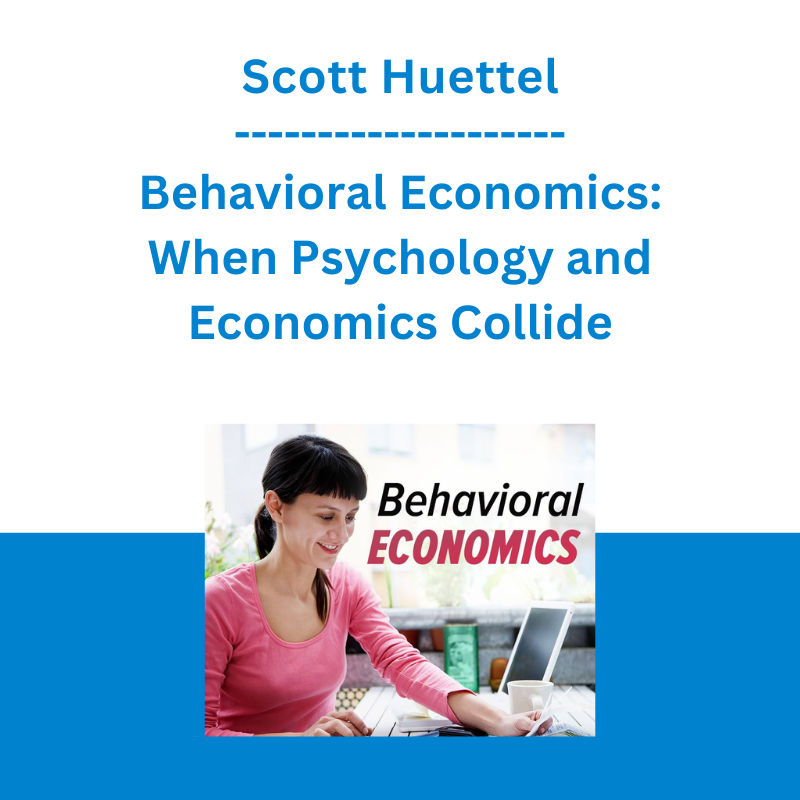


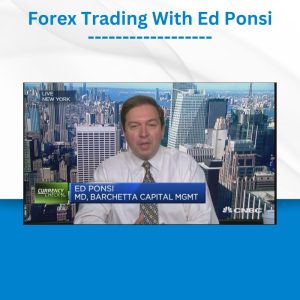


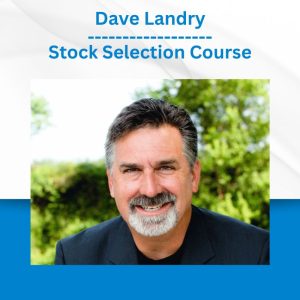

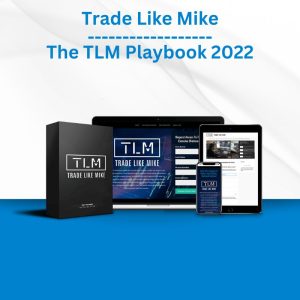
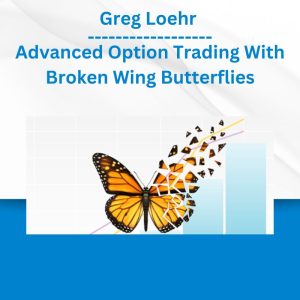 Greg Loehr - Advanced Option Trading With Broken Wing Butterflies
Greg Loehr - Advanced Option Trading With Broken Wing Butterflies  Forexmentor - Recurring Forex Patterns
Forexmentor - Recurring Forex Patterns 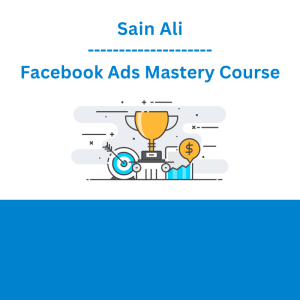 Sain Ali - Facebook Ads Mastery Course
Sain Ali - Facebook Ads Mastery Course  George Fontanills & Tom Gentile - Optionetics 6 DVD Series Home Study Course (Digital Download)
George Fontanills & Tom Gentile - Optionetics 6 DVD Series Home Study Course (Digital Download)  Matthew Kratter - Trader University
Matthew Kratter - Trader University  Joe Santos Garcia - Shopify App Developer - Career Bundle
Joe Santos Garcia - Shopify App Developer - Career Bundle  John Overburf - Mind Liberating Language
John Overburf - Mind Liberating Language  Alphashark - The AlphaShark SV-Scalper
Alphashark - The AlphaShark SV-Scalper 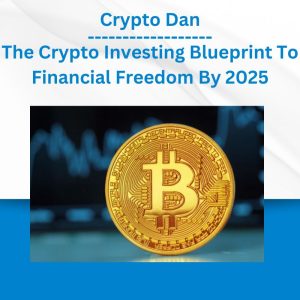 Crypto Dan - The Crypto Investing Blueprint To Financial Freedom By 2025
Crypto Dan - The Crypto Investing Blueprint To Financial Freedom By 2025 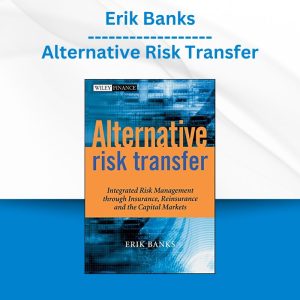 Erik Banks - Alternative Risk Transfer
Erik Banks - Alternative Risk Transfer  Julie Stoian & Cathy Olson - Launch Gorgeous - Funnel Gorgeous Bundle
Julie Stoian & Cathy Olson - Launch Gorgeous - Funnel Gorgeous Bundle 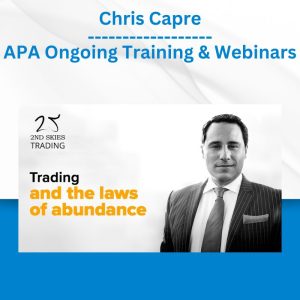 Chris Capre - Advanced Price Action Ongoing Training & Webinars
Chris Capre - Advanced Price Action Ongoing Training & Webinars